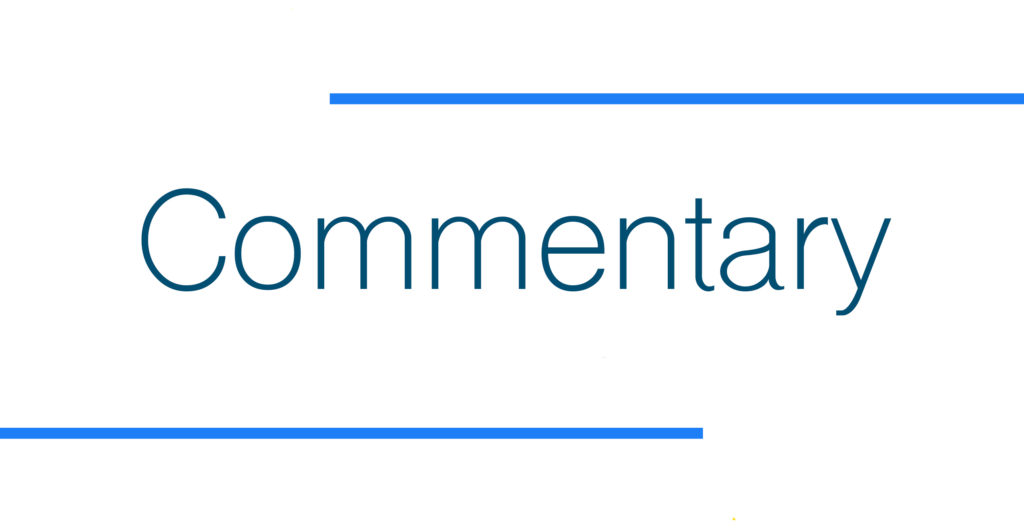According to Measure of America, the number of teens and young adults disconnected from both work and school in the United States fell for the eighth year in a row, from a recession-fueled high of 14.7% in 2010, to 11.2% in 2018. The Covid-19 pandemic will cause youth disconnection rates to spike dramatically.
In a recent report titled “A Decade Undone: Youth Disconnection in the Age of Coronavirus,” Measure of America estimates that the number of disconnected youth will easily top six million and could swell to almost one-quarter of all young people. With students physically disconnected from schools and unemployment the highest it has been since the Great Depression, young adults from the most disadvantaged communities will be left even further behind their peers and face the highest barriers to reconnection.

A recent report by the Pew Research Center found that Opportunity Youth — defined as young adults ages 16 to 24 who are disconnected from work and school — have been disproportionately impacted by the Covid-19 pandemic, with one-quarter of them losing their jobs from February to May. In a Pew research study conducted April 29 to May 5, young adults ages 18 to 29 were also more likely than older Americans to say that they have lost a job or taken a pay cut because of the coronavirus outbreak.
Nearly half of young adult workers (48%) were employed in higher-risk industries, compared with 24% of workers overall — which have made this population more susceptible to the impacts caused by this disease. The pattern of job losses by age in the Covid-19 recession is generally consistent with the pattern in the Great Recession and in previous economic downturns.
According to the San Diego Workforce Partnership (SDWP), the San Diego County Youth Disconnection Rate stands at 9.2%, just under the 10.9% rate for California. SDWP estimates that there are currently 38,000 Opportunity Youth residing in San Diego County. Whereas 8.8% of disconnected youth in San Diego presently hold associate or bachelor’s degrees, the overwhelming majority of these young adults have not obtained postsecondary credentials. One in five disconnected young adults has yet to complete a high school diploma or equivalency.
In light of the unrest in the United States due to racial and ethnic inequality, disaggregated data provide a more insightful understanding of the plight of Opportunity Youth. In 2018, SDWP partnered with Measure of America to conduct regional research on disconnected youth, revealing that San Diego County had the largest Black-White disconnection disparity of any big city in the nation in 2016, the most recent year for which data are available.
The county’s overall African-American youth disconnection rate stood at 26.4% — the second-highest in the nation, second only to the St. Louis region. San Diego County ranked first and second on metrics that measure how many of our Black youth are struggling and indicate how badly we are failing them in the critical passage to adulthood. While it is clear that young people generally will suffer, low-income people of color will be the most impacted by this crisis.
San Diego County also faces a housing crisis. The U.S. Department of Housing and Development ranks San Diego as the fourth-largest homeless population in the nation. The Regional Taskforce on the Homeless San Diego reports that 4,228 youth and young adults ages 14 to 24 experienced homelessness or unstable housing during 2016 and 2017.
About 1,375 of these homeless Opportunity Youth were unaccompanied ages 14 to 17. Justice-involved youth make up more than half of San Diego’s youth and youth adults experiencing homelessness. Fifty-four percent have been in jail, prison or juvenile hall.
Further, more than one in five (approximately 72,000) young adults ages 18 to 24 are living at or below the federal poverty level. One in 10 San Diego’s youth ages 16 to 24 were disconnected from work or school in 2017.
Fifty-five percent of adult victims of sex trafficking reported that they had been homeless at some point in their lives, and 28% reported that they were part of the foster care system. One in four homeless youth identify as lesbian, gay, bisexual or transgender.
Despite overall improvements in the youth disconnection rate over the last decade, the gaps between disproportionately impacted groups persisted — especially for those from racial and ethnic minority populations. This divide certainly has been exacerbated by Covid-19. Something needs to change. A radical response is urgently required.
The response
SDWP has partnered with local public educational agencies and nonprofits — including San Diego Unified School District, San Diego Community College District (SDCC), UCSD CREATE and United Way of San Diego — to address this disproportionate of disconnection on African-American youth in the county. These stakeholders concluded that one-size-fits-all programs are not serving Black youth effectively and collectively decided to test targeted interventions.
As a result of these deliberations, the partners took the first step on May 29, 2018, to convene San Diego County’s first-ever African-American Achievement Summit. More than 750 high school students were bussed to San Diego City College from schools around San Diego Unified, where they were met by dozens of African-American community leaders and young adult peer mentors.
Local educational agencies and nonprofits have initiated a range of evidence-based practices and programs to serve the needs of Black and Brown Opportunity Youth. Youth Will, a regional nonprofit organization, is developing a culture of youth-adult partnership that trains young people to facilitate meetings and trainings that can build a community where young adults learn lessons from elders at the same time elders are learning about the struggles youth face.
The entire culture of intergenerational learning is to encourage and facilitate people coming together to solve issues toward pursuit of shared goals that improve community. This type of work has been the catalyst for some of the greatest changes in history because young and old come together around a shared vision for a better future.
As community organizations continue to improve resources and meet the needs of youth, considerable work remains.
The solution
Joblessness remains pervasive throughout California and the United States, even as states continue to reopen. Many young adults in San Diego who were employed in early 2020 are now experiencing housing insecurity, particularly Opportunity Youth. Even as employers begin to rehire furloughed workers, the unemployment rate remains higher than at any point in modern history.
The shutdown caused by the pandemic initially was predicted to last several weeks, but elected officials and healthcare leaders continue to express uncertainty about the path forward. As the shutdown continues, our community’s most vulnerable residents have been forced to shoulder the brunt of the burden. Further, many industries are not sure if, or when, normal operations will return. Many young adults worked in these industries.
Now, more than ever, we need to focus on relevant, free, fast job training for young adults who recently became displaced by the pandemic. San Diego Continuing Education (SDCE), the adult education division of SDCCD, provides more than 75 tuition-free career education pathways for any adult (18+) resident of California. These programs (e.g. coding, cybersecurity, welding, plumbing, culinary arts, and automotive) are designed to quickly move lower-skilled workers into meaningful careers that pay livable wages.
Three years ago, SDCE piloted a learning community called San Diego Gateway to College and Career (SDG2CC) in partnership with the San Diego Workforce Partnership. The program tapped federal Workforce Innovation and Opportunity Act funds to provide holistic services to disconnected young adults in th county.
SDG2CC works to break down barriers to student success by providing inclusive learning environments through increased access to and enrollment in SDCE’s high school diploma/equivalency programs, English as a second language courses, and free career training certificates along with targeted student supports.
Program participants receive intensive case management, inclusive counseling, financial supports for incidentals (e.g. bus passes, meal vouchers, laptops, textbooks, etc.), paid experiential learning opportunities (internships in respective career paths), and guaranteed admission into the San Diego Promise, which offers two years of free community college plus $1,000 stipends for textbooks and other costs to those students who want to continue their studies in pursuit of a credit degree or certificate.
Paid internships are critical to the success of Opportunity Youth. The average annual household income for students in SDCE’s high school diploma/equivalency program is less than $5,000. These students are often referred to as at-risk, but I assert that disconnected students are effectively in crisis. They are beyond risk. The earn-while-you-learn model coupled with additional grants to address incidentals allows students to focus on academic and professional objectives by eliminating obstacles to success.
After the immediate needs of young adults are met (e.g. housing, mental and physical health, substance abuse, childcare, transportation, etc.), deliberate efforts must be taken to incentivize participation in intensive, short-term free adult noncredit career education certificate programs — particularly now that the Covid-19 pandemic has devastated the American economy and job market.
The first SDG2CC cohort thrived, with 76 students completing certificate programs and transitioning to employment or college. Over the past five years, SDCE enrolled more than 300 students in the program, the only comprehensive learning community for Opportunity Youth in the county. Unlike most similar programs, SDG2CC case management services continue after students exit the program.
Per the funders’ requirements, success is measured by identifying student outcomes six months and one year after exit from the program. Students need to be employed in a pathway in which they were trained or enrolled in college with high academic success, which is based upon grades and positive progress toward program completion.
SDCE proudly reports that SDG2CC has had a 90% success rate. In many ways, society has given up on these students, but the results show that when conditions are optimal, all students can succeed. It is unfortunate that current funding caps the number of disconnected youth who can be served because SDCE’s model is working.
When Covid-19 forced SDCE to stop offering in-person instruction, the SDCE Foundation raised funding to purchase laptop computers and wifi devices to ensure the most marginalized students could continue education.
Over the past three months, SDCE distributed more than 1,150 laptops, in part due to the generosity of the San Diego Foundation, the Lucky Duck Foundation, and the United Way of San Diego County. Despite these efforts, a big technological divide persists, so additional support is needed from the community.
Unfortunately, SDCE’s model does not exist in other large metropolitan regions facing similar challenges with limited low-income housing and large numbers of disconnected youth. Many programs provide components of SDG2CC, but this program stands alone as a fully comprehensive learning community to address the whole student.
Further, no other community college district in California provides the breadth of free noncredit career training opportunities offered by SDCCD. This month, SDCE launched the Interactive Competency-Based Online Microcredentialing (ICOM) Academy — California’s first fully accredited, fully online adult noncredit career training institute. Anyone who resides in California can enroll in 19 distance education job training certificates for free.
Replication of SDG2CC program and SDCE’s robust free adult noncredit pathways offers a blueprint to eradicate the Opportunity Youth crisis in America.





